We kindly inform you that, as long as the subject affiliation of our 300.000+ articles is in progress, you might get unsufficient or no results on your third level or second level search. In this case, please broaden your search criteria.
While summering up historical references, only the exclusive conclusions which support the thesis will be conveyed – that the Macedonian history is distinctive and individual, and different and foreign in relation to the so called history of the Hellenes. Fortunately, these exclusive inferences are “first class” – this is witnessed by eminent persons from the Hellenic genus, intellectuals, rhetorical philosophers, rhetors, and the most distinguished politicians of just that time, the time before the very demise of the Hellenic city-states, and right before the magnificent rise of Macedonia. The main historical impression is that: on one side is the historical sphere of the “joint defeat of all the Hellenes” and “deprivation of destiny of their famous city-states”, on the other, again, is – the separate history of the rise and glory of the antique Macedonians, their rulers, of the world basilea of Alexander of Macedonia. These two spheres are joint, as much as they are utterly opposed in their historic co-relation. Actually, the historical conditions are changing from the root, even the sharp border between the Hellenes and the barbarians, among whom are, of course, also the Macedonians, is disappearing, a process of cultural and social symbiosis comes about, according to which, Philip is the carrier of the exclusive idea for a global society. Understandably, these ideological aspirations do not come forth peacefully, because they are not only about a cultural “globalization”, but about a political one that must be carried out through war and fighting. So, such important material imposes a need for rereading history. The critical understanding of the contemporary conception of the humanities strives for diversity and differentness, for particularity and cultural equality: local investigation of the history is promoted, hierarchical assessment of cultures is refused, traditional prejudices about “high” and “low” cultures are being rejected, favouring particular historical peoples, states, cultures, on account of the already neglected peoples and cultures, is disregarded. It is well known that the “pet” of world historiography is classical Helada, and that its favourites are the Hellenic culture and Roman civilization. Traditional historiography not only disregards other nations and cultures, but it is also assigns them all to the general denominator of just these two cultures. It goes without saying that ancient Greek culture and Roman civilization are the dominant focus of world history, but the “word” of the ancient Greek and Roman historians, logographers, doxographers, must not be uncritically accepted; right here, one should “catch” the ancient Greek writers, who very often, in accordance with their xenophobic mentality, make sense of the world as divided into “domestic” and “foreign”, Hellenes and barbarians, into “battles between themselves” and “wars with foreigners” (Plato, Republic).
More...
The Bogomil movement in its authentic form appeared in the South-Western parts of Macedonia in the middle of 10th century. The main preacher and ideological creator was the priest Bogomil, whose initial activity is chronologically connected to the 30’s of 10th century. The idea of Bogomilsm as an authentic spiritual manifestation was probably due to his theoretical experiences and objective judgment, but the integral realization of this ideology with theological, dualistic, philosophical and cultural indications represents the result of many-years collective work with the closest associates and sympathizers. Priest Bogomil’s pragmatism lies mainly in his ability to coordinate his followers for a complete realization of Bogomilism as a movement and as a teaching. The existing of Bogomilsm in Macedonia took place until 15th century, and at the same time it was periodically adapting its concept of action depending on the current social, political, religious and ideological circumstances. The religious and dualistic concept of Bogomilsm also had an evident influence on the cultural and spiritual processes and tendencies in Macedonia and wider on the Balkans, Byzantium and in some way in the countries of Western Europe. The cultural aspects of the movement could be identified through the literary tradition (literary works with original Bogomil status and apocryphal texts), than philosophical tendencies and finally through the authentic folk heritage with dualistic character.
More...
The article investigates into the problem of Byzantine culture influence which is attempted to be traced in the formation of Russian culture and literature. In the article there are considered the attitudes towards Byzantine culture on the part of the 19th century Russian culture various trends representatives (such as ‘the westernizers’ and ‘the Slavophiles’); there are also exposed both the genetic ties of Russian culture with Byzantine aesthetic ideas and those of Byzantine version of Christianity with the bunch of Russian classical literature ideas (for example, of such writers as A. Pushkin, N. Gogol, F. Dostoyevsky, N. Leskov, L. Tolstoy, etc). As the result of the study the author comes to the conclusion which could be worded as follows. The question of the ‘Byzantine heritage’ significance for the development of a certain national culture used to be topicalised in the transitional, crisis periods of national histories when the problem as to what further historical way for the nation to choose sprang up.
More...
Study on the 1861 work "Utazás Keleten" (Eastern Journey) by Hungarian writer, historian and politician Balázs Orbán.
More...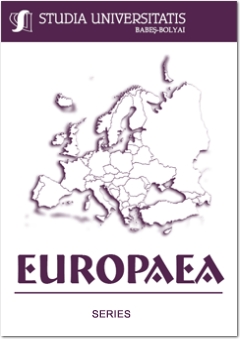
Jocelyn Benoist : Sens et sensibilité. L’intentionnalité en contexte, Paris, Éd. du Cerf, 2009, 327 p.
More...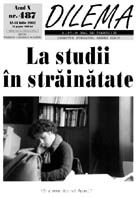
Simona Sora’s interview with Antonio Bonet Correa, the coordinator of the “Atlas mundial de la arquitectura baroca”, reveals interesting aspects of the relationship between architecture and people. The dialogue shows some interesting details on Bucharest, “the little Paris” of the Eastern Europe.
More...
The European Renaissance, the product of the achievements of European thinkers and scholars in the final centuries of the mediaeval period, was to a considerable extent inspired by Islamic culture and civilization. European interest in translating scientific works by Muslim authors with a view to gaining new insights into human knowledge and cognition paved the way for much scholarly research in Europe. As a result, a great many works by Muslim thinkers were studied as compulsory texts at Europe’s universities during the Renaissance and later, during the Industrial Revolution. The translation of these works began roughly at the time of the Reconquista in Andalusia (11th century), reaching a peak during the next hundred years or so.
More...
In the summer of 2005 the author made a discovery at the Latvian National Historical Archives. The two manuscripts by C. R. Jakobson (1841–1882), written in 1871 addressed the lives of two religious reformers – Arnold of Brescia and John Wyclif. As the basic idea of both manuscripts was hostile to the Christian Church they were banned by the Riga censor. Later, Jakobson published them in his newspaper Sakala (1878). The found manuscripts shed additional light on the formation of Jakobson’s anti-clericalism as well as on censorship.
More...
The Paul Ariste Centre for Indigenous Finno-Ugric Peoples was established on the initiative of the Kindred People’s Programme in autumn 1999. The article provides an overview of the activities of the Ariste centre in the five years it has been active – the scholarship students of the Kindred People’s Programme in Estonia, the communication forum SURING established for Finno-Ugric students, seminars on various Finno-Ugric issues, and the participation of the scholarship students of the programme in international academic events. The most consequential work has been done on compiling the online publications on the Mordvin and Komi in cooperation with the Department of Folkloristics of the Estonian Literary Museum and with the involvement of young people of our kinfolk studying in Estonia. Various publications in Finno-Ugric languages have added impetus to the first studies in various fields and to creating and updating academic terminology in native Finno-Ugric languages.
More...
A well-known and frequently quoted example reminds us of how the principles of the mnemonic technique were discovered in antiquity. In Book II of Cicero’s De Oratore, Antonius discusses with his friends the value of memory training and recounts how one day Simonides had just stepped out of a banquet hall when the roof collapsed, killing all who had remained inside. Simonides was able to reconstruct the guest list by recalling the location of each person’s seat at the table. By placing images in their spatial backgrounds in his memory, he managed to provide an account of the order, and to revive the identity of those who lay dead under the fallen roof (cf. Carruthers 1990:22, 147; Carruthers 1998:27-28, 197; Marin 1992:197-209).
More...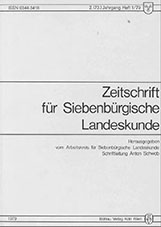
Genealogical data on the histsory of Transylvanian migrations and on modifications of Saxonian self-consciousness
More...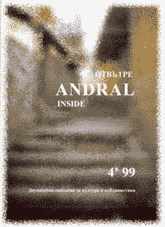

The topic of this work is Serbian schools and the teaching of Serbian language in Greece in the 20th century. During the first half of the 20th century the existence of Serbian people in Turkey (later in Greece) was acknowledged through school and church. Thanks to the Serbian schools, Serbs as an invisible minority became a visible one. In the second half of the 20th century there is primarily a teaching of Serbian language as a foreign language. During this period, Serbian was accepted primarily by Greeks at courses and private classes. At the beginning of the nineties in the 20th century because of the war in the territory of Yugoslavia, a large number of refugees went to Greece. Teaching of Serbian as a native language was organized only ten years later (at the beginning of 21st century). In some places, the schools are located in consular sections and have the assistance of the country of origin (Thessalonica, Katerini) while in Hani (Crete) immigrants organized themselves without the assistance from the country of origin. By studying Serbian schools and the teaching of Serbian language, this work considers relation towards language as a symbol of ethnic identity – at the individual level, at the level of receiving country and at the level of country of origin.
More...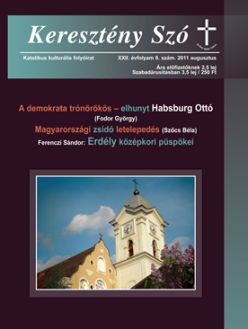
The Jewish history shows several stories of the migrant Jews from the story of the flee from Egypt, the Babylonian deportation and so on. The Jews migrated to East and West as well. In the history of their apparition in Hungary there are several turning points. They already appeared in Pannonia in the Roman times, but the documented settlements happened in the 13th century. The main settlements happened in the 17th, 18th centuries. One part of the Jews came to Hungary from Austria, another one from the Czech territories after 1726, when King Charles the 3rd allowed only one member of the Jewish families to get married. Thus, many quite rich Jews came to Hungary and started a life and a business there. The third wave arrived from Poland after the country was first dismembered in 1722. Galicia, an important territory where many Jews had lived, came under Hapsburg domination. Here the Jews lived under harsh circumstances, in great need, thus they got involved in such low jobs as innkeepers. The article presents the history of the Hungarian Jewish population.
More...
Ethnogenesis of each nation is a long and diverse ethnic process. This statement is mainly true for people of six language families – Afro-Asiatic, Kartvelian, Indo-European, Uralian, Altaic and Draviysky families- which were closely related to each other in ancient times. Therefore, they are united in one Nostratic language family. Genetic affinity of the Nostratic language family is found in vast variety of related morphemes. The modern Yakuts originated from the synthesis of highly complex processes of ethno-formation, in which ancient, medieval Indo-European and Altaic cultural and language elements take part.
More...
The subject of provincial Russian towns of the late XIX – early XX centuries especially Siberian and Far East ones, have become very popular nowadays. Man’s clothing and accessories of that time is the most important part of his culture which reflects the problem of preservation of traditional archaic forms and appearances of novelty, which is also observed in the image of Yakutsk’s residents.
More...